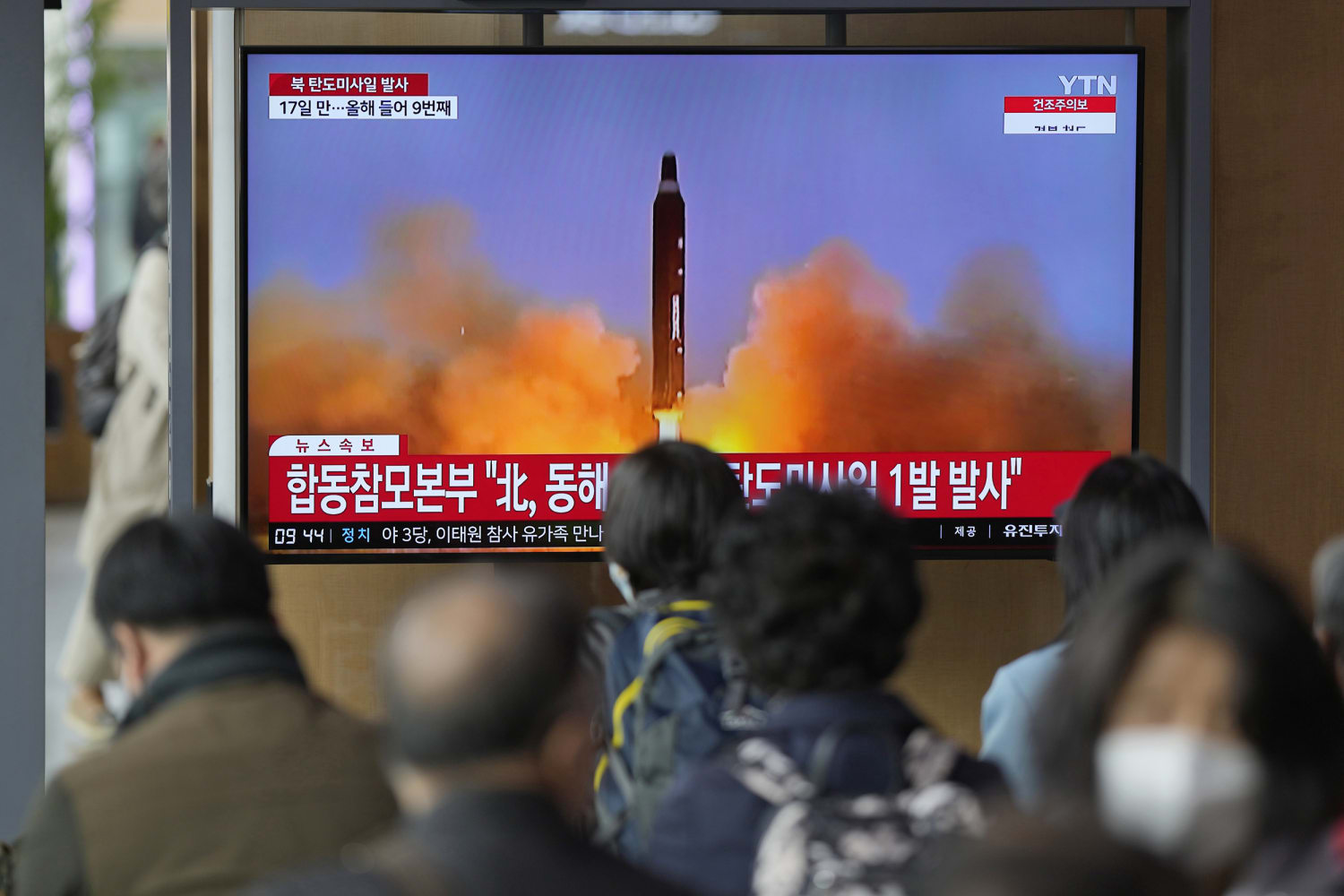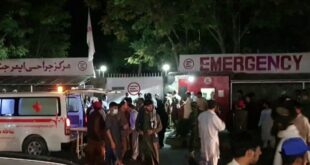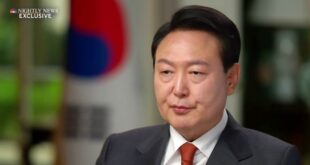[ad_1]

SEOUL, South Korea — North Korea launched a ballistic missile on a high angle that landed between the Korean Peninsula and Japan early Thursday, continuing its provocative run of weapons tests. The launch prompted Japan to issue an evacuation order for a northern island that was later retracted, showing the vigilance of North Korea’s neighbors over its evolving missile threats.
South Korea’s Joint Chiefs of Staff said the missile launched from near the North Korean capital, Pyongyang, flew toward the waters off the North’s east coast. The statement described the missile as having a medium or longer range but did not say how far it flew.
Japanese Defense Minister Yasukazu Hamada told reporters that North Korea launched a possible intercontinental ballistic missile on a high angle. Hamada said the missile did not reach Japan’s exclusive economic zone.
Japanese Prime Minister Fumio Kishida told reporters he planned a National Security Council meeting to discuss the launch. Asked about the accuracy of Japan’s information dissemination for future North Korean launches, Kishida said the government was checking related information including alerts.
North Korea commonly test-launches missiles toward the waters between the Korean Peninsula and Japan. All its past ICBM launches were made in the area, but on elevated trajectories to avoid neighboring countries.
South Korea and Japan typically do not issue evacuation orders for North Korean launches unless they determine weapons flew in the direction of their territories.
But after Thursday’s launch, the Japanese government urged people on the northernmost island of Hokkaido to seek shelter. The government then corrected and retracted its missile alert, saying its analysis showed there was no possibility of a missile landing near Hokkaido.
It was unclear why Japan issued the order for a missile that did not fall near the island, but the incident suggested it was being cautious about North Korea’s evolving missile threats.
Last October, Japanese authorities issued a similar evacuation order when a North Korean intermediate-range missile flew over Japan in a launch that demonstrated the potential to reach the U.S. Pacific territory of Guam. At the time, Japanese authorities alerted residents in its northeastern regions to seek shelter and halted trains, although no damages were reported before the weapon landed in the Pacific.
Thursday’s launch came days after North Korean leader Kim Jong Un vowed to enhance his nuclear arsenal in more “practical and offensive” ways.
North Korea has launched about 100 missiles this year and in 2022, many of them nuclear-capable weapons that place the U.S. mainland, South Korea and Japan within striking distance.
There are concerns that North Korea could conduct its first nuclear test in more than five years since it unveiled a new type of nuclear warhead earlier this month. Foreign experts debate whether North Korea has developed warheads small and light enough to fit on its more advanced missiles.
South Korean officials say North Korea has not been responding to South Korean calls on a set of cross-border inter-Korean hotlines for about a week. The North’s alleged suspension of communications on those channels could be worrisome because they are meant to prevent accidental clashes along the rivals’ disputed western sea boundary.
On Tuesday, South Korean Unification Minister Kwon Youngse, Seoul’s point man on the North, expressed “strong regret” over North Korea’s “unilateral and irresponsible attitude” over the hotlines. Kwon also warned unspecified legal action over the North’s use of South Korean assets at a now-stalled inter-Korean factory park in North Korea.
South Korea pulled its companies out of Kaesong in North Korea in 2016 following a North Korean nuclear test, removing the last remaining major symbol of cooperation between the rivals.
North Korea’s advancing nuclear arsenal is expected to be a major topic during a summit between South Korean President Yoon Suk Yeol and U.S. President Joe Biden later this month in Washington. Yoon’s government has been seeking stronger U.S. assurances that it will surely and swiftly use all its military capabilities, including nuclear, to protect South Korea in the event of a North Korean nuclear attack.
 Latest Breaking News Online News Portal
Latest Breaking News Online News Portal




